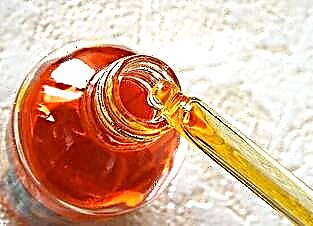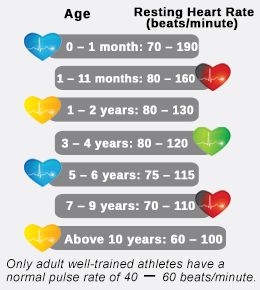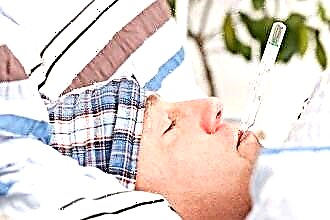Sinusitis as a disease is a lesion of the maxillary sinuses by various types of bacteria, viruses and fungi, leading to intoxication of the whole organism and accompanied by expressive symptoms. One of the classic methods of treating sinusitis, proven by decades of medical practice, is a puncture of the paranasal sinus, followed by removal of purulent exudate and injection of drugs. However, this operation is unpleasant and frightens patients, so the question remains how to treat sinusitis without a puncture.
The essence of the puncture and how to replace it
 Maxillary sinusitis is an extremely unpleasant disease, the cure of which can sometimes take several weeks or even months. Therefore, knowing how to quickly get rid of it, doctors recommend a minimally invasive surgery - a puncture.
Maxillary sinusitis is an extremely unpleasant disease, the cure of which can sometimes take several weeks or even months. Therefore, knowing how to quickly get rid of it, doctors recommend a minimally invasive surgery - a puncture.
With sinusitis, the main problem is a swollen mucous membrane that complicates or even blocks the natural drainage of the paranasal pockets, and the active multiplication of bacteria or fungi in the closed space of the sinuses, which causes the accumulation of pus and the development of severe pain syndrome. The puncture creates a temporary channel for the outflow of exudate, actually replacing the swollen, impassable anastomosis. In addition, it becomes possible to deliver antibiotics and other drugs directly into the cavity, which is more effective and safer than oral antibiotic therapy.
In fact, the answer to the question of how to cure sinusitis without a puncture comes down to the search for medicines and procedures that can ensure the prompt removal of purulent masses from the sinus and active suppression of the causative agent of the disease. Solving these two tasks opens the way to eliminating the most unpleasant symptoms of the disease:
- pain in the head and sinus area;
- congestion and disturbances in nasal breathing;
- intoxication of the body;
- inflammatory process and tissue swelling;
- normalization of the ciliated epithelium.
Today, there are several basic options for how to do without a puncture with sinusitis:
- antibiotic therapy;
- complex drug treatment to eliminate the cause and consequences of the disease;
- lavage of sinuses in a hospital setting using advanced technologies;
- minimally invasive interventions not associated with damage to the integrity of the sinus walls;
- the use of physiotherapy (electrophoresis, laser, UHF);
- support of traditional treatment with traditional medicine.
Complex drug treatment of maxillary sinusitis
An important factor that can allow the treatment of sinusitis without a puncture is the time of initiation of therapy.
If the disease is diagnosed at an early stage, before the development of irreversible processes in the mucous membranes of the sinus, then in most cases a puncture will not be needed unless additional factors are added, for example, the presence of severe chronic ailments that impede full-fledged drug therapy. Such factors are taken into account by the attending physician when drawing up a treatment regimen.
Preparations, using which you can quickly cure sinusitis without a puncture:
- Antibiotics The more accurately the causative agent of the disease is determined, the easier it is to choose the right antibiotic to destroy it. Therefore, it is advisable to take a swab from the nasal mucosa for bacterial culture, the result will be in a few days. If there is no way to wait, then otolaryngologists practice the use of antibiotics with the widest possible spectrum of action or aimed at suppressing the most common pathogens. The most commonly used antibiotics are penicillins (Flemoxin solutab, Amoxiclav), macrolides (Macropen), fluoroquinolones (Ciprofan, Ciprofloxacin) and cephalosporins (Cefazolin, Ceftriaxone). In the absence of positive dynamics, ENT can adjust treatment tactics.
- Antiseptics for disinfecting mucous membranes. Purulent sinusitis is characterized by a large number of secretions infected with pathogenic microflora. To prevent its further multiplication and spread, it is necessary to rinse the nasal passages with antimicrobial agents. Furacilin, Miramistin, Dioxidin are effective for this purpose. You can also use Protargol (silver based) or Polydex aerosols.
- Decongestants, corticosteroids, and antihistamines. They all perform in different ways
 similar functions: reducing puffiness by narrowing the vessels and unblocking the connecting channels, restoring aeration and drainage of the air chambers. Antihistamines (Loratadin, Tsetrin, Fenistil, Erius) are available in the form of syrups (for children under 6 years old) or tablets. Water-soluble and oil vasoconstrictor (Nazivin, Tizin, Nazol) and steroid (Avamis, Nazonex) drugs work better at the local level, therefore they are offered in the form of aerosols and drops.
similar functions: reducing puffiness by narrowing the vessels and unblocking the connecting channels, restoring aeration and drainage of the air chambers. Antihistamines (Loratadin, Tsetrin, Fenistil, Erius) are available in the form of syrups (for children under 6 years old) or tablets. Water-soluble and oil vasoconstrictor (Nazivin, Tizin, Nazol) and steroid (Avamis, Nazonex) drugs work better at the local level, therefore they are offered in the form of aerosols and drops. - Mucolytics help to reduce the thickness of the secretion and its outflow from the nasal passages and sinuses. The cilia of the ciliated epithelium can remove more fluid exudate on their own. This is especially important for exacerbations of chronic sinusitis. Popular and effective ACC, Sinupret, Fluditek.
Physiotherapy for sinusitis
Drug therapy, as a rule, is combined with physiological procedures, the purpose of which is to mobilize the internal forces of the body to overcome the disease. Physiotherapy procedures can affect tissues in various ways, but their purpose is to increase the body's immune response to foreign agents that have entered the nasal cavity and accessory pockets.
The following physiotherapy procedures are often prescribed:
- Laser radiation. Using an endoscope, a miniature red light source is inserted into the nose and illuminates the affected mucous membranes.
- UHF. There is an effect of an electric field at the local level, which leads to a slight heating of tissues, an improvement in blood flow and metabolic processes. The result is an increase in the number of immune cells in the area of the affected sinus.
- Electrophoresis. With the help of an electric current, a point non-invasive delivery of drugs (antihistamines or antibiotics) occurs to the desired place.
- Bernard currents (diadynamic currents). An electrical signal comes through an electrode attached to the area of the affected organ. Pain relief and reduction of inflammation occurs.
Physiotherapy is not prescribed in the acute purulent stage of the disease in order to avoid deterioration of the patient's condition. They are most effective at the stage of recovery after the removal of acute symptoms and the release of air pockets from mucous accumulations.
Modern methods of flushing the sinuses with sinusitis
Treatment of sinusitis without punctures is impossible without constant evacuation of purulent exudate from the paranasal sinuses. However, the swelling of the anastomoses often makes simple flow-through irrigation insufficiently effective, and innovative approaches to this manipulation are required. The best result to date is shown by two methods based on the use of the difference in pressure. Both of them are carried out under the supervision of a doctor in a hospital or clinic.
Moving fluids (Proetz's method), colloquially called "cuckoo" due to the fact that the patient says "cuckoo" during the procedure so that the liquid does not flow down the throat.If a person has not complicated sinusitis, treatment will last about 5 procedures, and the feeling of congestion weakens after the first "cuckoo".
The very essence of the method is that the otolaryngologist pours an antiseptic solution (for example, furacilin) into one nostril, and after he clears the mucus from the sinus, sucks it through the other nostril with a special aspirator. The method differs from conventional irrigation in that, under the influence of an aspirator, a rarefied space is created in the nose, which makes it possible for the liquid to penetrate directly into the accessory pocket and rinse it.
At the same time, pain is minimal, therefore the Proetz method is used in the treatment of children from 5-6 years old. At an earlier age, it is difficult to control the behavior and reactions of the child, so it is better to use other methods of clearing the sinuses.
YAMIK catheting is another method of flushing the maxillary sinuses. To carry it out, a special device is required - the YAMIK catheter, which consists of two inflatable balloons on a flexible base and a cuff to which a syringe can be attached. After local anesthesia, the device is inserted into the nose. The posterior and anterior balloons are alternately inflated, after which the air is pumped out with a syringe from the blocked part of the nasal cavity.
Under the influence of the resulting vacuum (intermittent pressure), the fistulas open, and soon all exudate flows from the sinus into the nose, from where it is removed with a syringe. The final stage is the infusion of medicinal solutions through a special cannula for the treatment of eroded mucous membranes inside the accessory chamber. A sustained therapeutic effect is achieved after several repetitions. Despite the pain relief, deep insertion of the catheter can be unpleasant, so the procedure is not recommended for old people and young children.
 At home, you can use the usual flowing rinsing, in which water is poured into one nostril and flows out of the other by gravity. For this, solutions of salt, furacilin, miramistin, decoctions of medicinal herbs are used. Despite the fact that with this method the sinuses themselves are washed poorly, nevertheless, the removal of mucus from the nasal passages and the effect of active substances on the fistula can reduce the inflammatory process and unblock the duct.
At home, you can use the usual flowing rinsing, in which water is poured into one nostril and flows out of the other by gravity. For this, solutions of salt, furacilin, miramistin, decoctions of medicinal herbs are used. Despite the fact that with this method the sinuses themselves are washed poorly, nevertheless, the removal of mucus from the nasal passages and the effect of active substances on the fistula can reduce the inflammatory process and unblock the duct.
Balloon sinusoplasty as a way to avoid puncture
At the beginning of the century, an interesting method was developed to ensure drainage and aeration of blocked accessory chambers. Balloon sinusoplasty is a minimally invasive surgical procedure in which the integrity of the sinus walls is not compromised. The whole operation lasts no more than 2 hours and happens like this:
- With the help of a special guide, a balloon catheter is brought to the affected connecting canal.
- After probing the passage with a guide, the catheter is inserted into the anastomosis, the doctor carries out all the manipulations, observing through the endoscope.
- Using pressurized fluid, the catheter inflates for a few seconds, pushing the swollen canal walls apart and opening up access to the sinus.
- After removing the deflated balloon, the accessory chamber becomes accessible for the administration of the necessary drugs, and the natural processes of drainage and air exchange are improved. The recovery time after the intervention is no more than a day.
Thinking about the question of whether it is possible to cure sinusitis without a puncture, one should not forget that in difficult advanced cases, the possible harm from the development of severe complications will repeatedly overlap the small unpleasant moments from the puncture of the maxillary sinus.

 similar functions: reducing puffiness by narrowing the vessels and unblocking the connecting channels, restoring aeration and drainage of the air chambers. Antihistamines (Loratadin, Tsetrin, Fenistil, Erius) are available in the form of syrups (for children under 6 years old) or tablets. Water-soluble and oil vasoconstrictor (Nazivin, Tizin, Nazol) and steroid (Avamis, Nazonex) drugs work better at the local level, therefore they are offered in the form of aerosols and drops.
similar functions: reducing puffiness by narrowing the vessels and unblocking the connecting channels, restoring aeration and drainage of the air chambers. Antihistamines (Loratadin, Tsetrin, Fenistil, Erius) are available in the form of syrups (for children under 6 years old) or tablets. Water-soluble and oil vasoconstrictor (Nazivin, Tizin, Nazol) and steroid (Avamis, Nazonex) drugs work better at the local level, therefore they are offered in the form of aerosols and drops.

